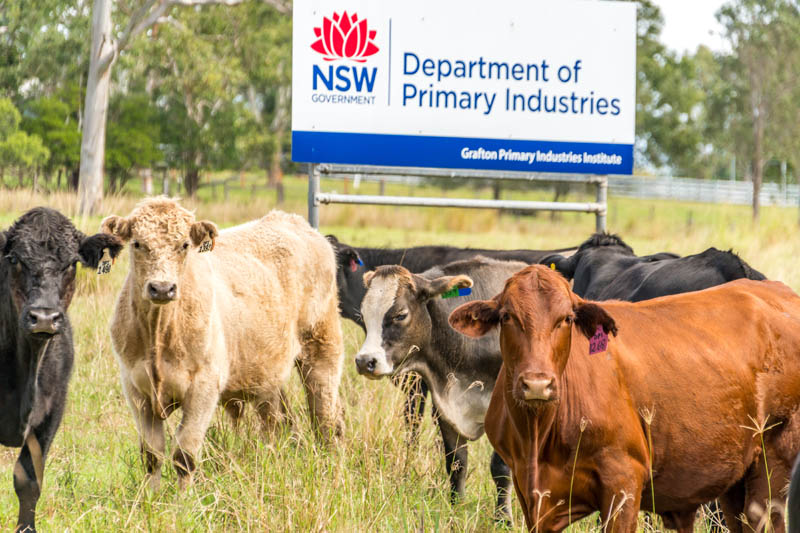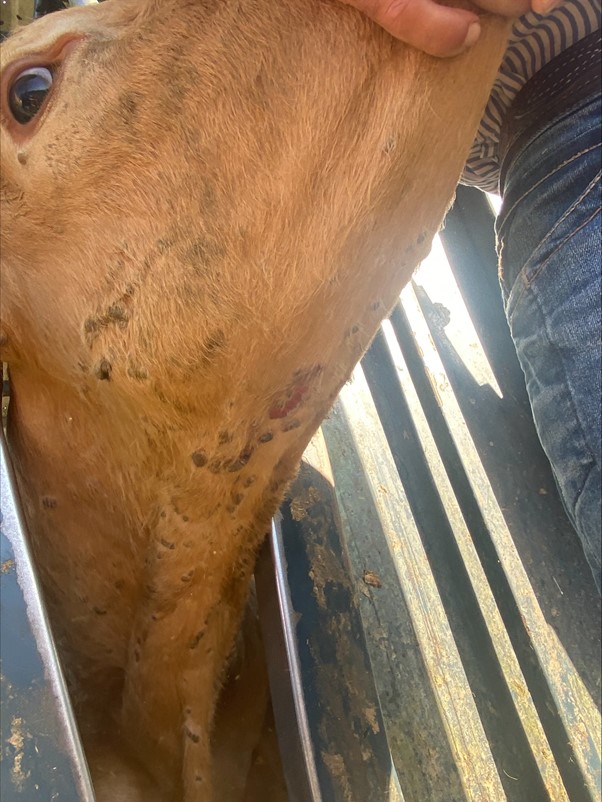- GVP $3.4 billion est. Up 1% year-on-year.
- The end of the herd rebuild led to higher production but lower prices.
- Export volumes increased despite a weaker global economic outlook.


Production
NSW Rolling 12 month beef slaughter ('000 head) 151
- NSW Rolling 12 month beef slaughter
- 10 year average
Price
Prices for finished stock were not as weak. Average heavy steer prices were 14% lower and finished the year at $2.78/kg lwt, 36% lower than the end of 2021-22. 178 In a reversal of trends observed in 2022, the price falls for restockers have been much larger than those for heavy finished stock. The discount between heavy finished steers and restocker steers, which had reached extreme levels during the herd rebuild, finished the year at 50 cents /kg lwt which is only slightly higher than average levels. 178 Like the broader EYCI, all categories of cattle have given up most of the gains since the end of the drought.
Eastern States Young Cattle Indicator (cents/kg cwt) 178
- Eastern States Young Cattle Indicator (cents/kg cwt)
Difference between heavy steer, feeder steer and restocker steer prices (cents/kg lwt) 178
- Average discount heavy steer to restocker steer
Trade
China remains comfortably NSW’s largest export market for beef and was one of the few major markets where both value and volume of exports increased. The value of NSW beef exports to China reached a new record high of $809 million, up 2.6% year on year. 35 China now accounts for 43% of total NSW beef exports. Exports to the United States were also up 6.1% to $220 million as cow slaughter increased during the year. The volume of exports to the United States increased 20% to 20,238 tonnes. Exports to other high value markets, Japan and South Korea were down in both value and volume terms which reflects high prices for Australian beef at the beginning of the year, economic uncertainty in both countries and high inventory levels in cold storage.
Outlook
Processing capacity is gradually increasing to meet the higher supply however, at this stage not quickly enough to halt the price declines. Processors continue to experience challenges in accessing labour and are also cautious given high red meat inventories in cold storage globally and economic uncertainty as global interest rates rise. At the time of publication weekly processing is now close to average levels, however this will need to increase further if dry conditions continue, or further price falls are likely.
Whilst current prices are creating some difficulties in the short term, the medium-term outlook remains very positive. There are signs that inventory levels in cold storage in key international markets are beginning to clear. Despite the current economic uncertainty, the long-term increase in global demand for beef is expected to continue. The US, which is one of Australia’s biggest beef customers (for beef trim) and also one of our biggest competitors in key market (for premium beef) has been liquidating its herd due to a widespread, multi-year drought. The herd is now approaching a six decade low. 49 This has created increased competition in export markets at the same time that our livestock prices were high. However, with better seasonal conditions the US is expected to enter a herd rebuilding phase which will reduce supply and competition creating significant opportunities for our exporters to regain lost market share in key markets and also increase US demand for beef trim. Processors are responding to this outlook with regular announcements of increased shifts or new capacity. 50 51 This should help address the short-term supply demand imbalance and lead to an improvement in prices for farmers.
Stronger Primary Industries Strategy
Saleyard Surveillance Program for Foot and Mouth Disease and Lumpy Skin Disease
Strategic Outcome

- 1.2 Coordinate timely and risk proportionate response

- Identify suspect cases of FMD and LSD requiring further investigation.
- Rapidly conduct FMD and LSD investigations and exclusions.
- Provide evidence of absence from infection with FMD and LSD.
- Support prompt management of FMD or LSD outbreaks at congregation points.
This program involved the visual inspection of cattle at saleyards and cattle tick inspection sites across NSW to identify and diagnose any animals with clinical signs consistent with FMD or LSD.
NSW currently relies primarily on passive surveillance for the detection of FMD and LSD, i.e., it relies on the reporting of suspect cases to state authorities by farmers, veterinarians, and other industry stakeholders. An active surveillance program has the potential to provide evidence of absence of these diseases if there were to be an incursion elsewhere in Australia which may impact trade relationships for NSW.
- 30 saleyards
- 256 inspections covering cattle from 11,317 properties
- 5 LSD exclusions (100% negative)


